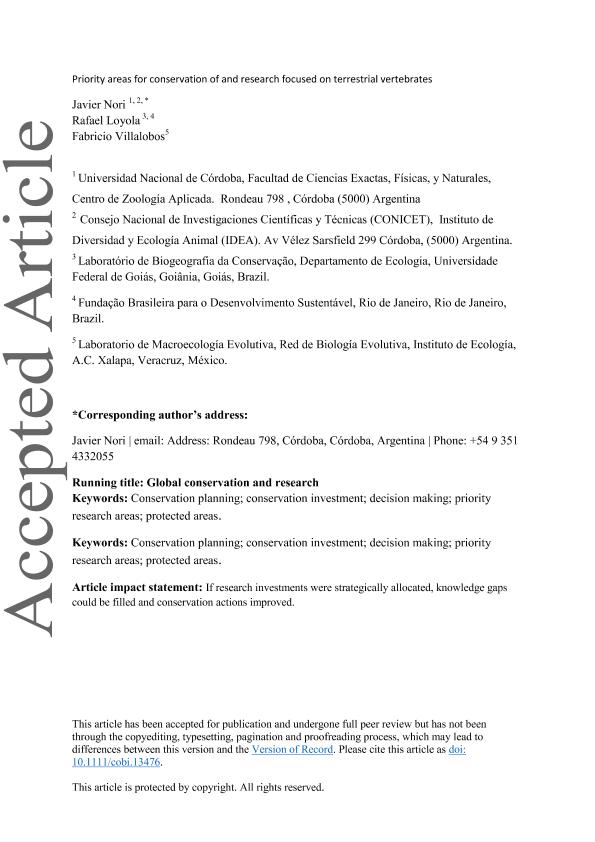Artículo
Priority areas for conservation of and research focused on terrestrial vertebrates
Fecha de publicación:
03/10/2020
Editorial:
Wiley Blackwell Publishing, Inc
Revista:
Conservation Biology
ISSN:
0888-8892
e-ISSN:
1523-1739
Idioma:
Inglés
Tipo de recurso:
Artículo publicado
Clasificación temática:
Resumen
Effective conservation policies require comprehensive knowledge of biodiversity. However, knowledge shortfalls still remain, hindering possibilities to improve decision making and built such policies. During the last 2 decades, conservationists have made great efforts to allocate resources as efficiently as possible but have rarely considered the idea that if research investments are also strategically allocated, it would likely fill knowledge gaps while simultaneously improving conservation actions. Therefore, prioritizing areas where both conservation and research actions could be conducted becomes a critical endeavor that can further maximize return on investment. We used Zonation, a conservation planning tool and geographical distributions of amphibians, birds, mammals, and reptiles to suggest and compare priority areas for conservation and research of terrestrial vertebrates worldwide. We also evaluated the degree of human disturbance in both types of priority areas by describing the value of the human footprint index within such areas. The spatial concordance between priority conservation and research areas was low: 0.36% of the world's land area. In these areas, we found it would be possible to protect almost half of the currently threatened species and to gather information on nearly 42% of data-deficient (DD) species. We also found that 6199 protected areas worldwide are located in such places, although only 35% of them have strict conservation purposes. Areas of consensus between conservation and research areas represent an opportunity for simultaneously conserving and acquiring knowledge of threatened and DD species of vertebrates. Although the picture is not the most encouraging, joint conservation and research efforts are possible and should be fostered to save vertebrate species from our own ignorance and extinction.
Archivos asociados
Licencia
Identificadores
Colecciones
Articulos(IDEA)
Articulos de INSTITUTO DE DIVERSIDAD Y ECOLOGIA ANIMAL
Articulos de INSTITUTO DE DIVERSIDAD Y ECOLOGIA ANIMAL
Citación
Nori, Javier; Loyola, Rafael; Villalobos, Fabricio; Priority areas for conservation of and research focused on terrestrial vertebrates; Wiley Blackwell Publishing, Inc; Conservation Biology; 34; 5; 3-10-2020; 1281-1291
Compartir
Altmétricas




